He built a powerful system for launching scientific ideas into startups. Can he do it again?
Arvind Gupta seems an unlikely person to lead the renaissance in synthetic biology. Though he studied genetics at UC Santa Barbara, he did not continue that path, and in the two decades before starting the life sciences accelerator IndieBio in San Francisco, he didn’t invent a drug or bring one to market, and he wasn’t a partner at a venture fund investing in biotech. Yet the most exciting things in biotechnology are happening at the intersection of these two domains: giving postdocs from academia a lab and just enough cash to prove their breakthrough science works.
IndieBio is far from the only life sciences accelerator, but it stands out for its ability to consistently crank out startups that sound like science fiction, with ambitions to save the planet. They make wood without the tree and meat without the cow and plastic out of mushrooms. They make chemicals without making pollution. While IT startups are busy making fitness bands, IndieBio’s startups make smart bees and computers with neurons.
IndieBio’s four-month program, run twice a year, provides a would-be startup a $250,000 investment in exchange for 8 percent of the company. In three years, IndieBio has graduated 81 startups, and 70 percent of them have already received additional venture backing — a “follow on” rate that’s double the average of typical, very good accelerators. The portfolio of graduates is now worth more than $700 million, collectively. “IndieBio is really the first accelerator to bring the engineer’s mindset to biology,” says Ursheet Parikh, a partner at Mayfield Fund, a venture firm.
The rising IndieBio brand is making the process happen even faster. “We had a number of angel investors looking at us all last spring,” says Anand Parikh, co-founder of Chronus Health, which is developing a “lab-on-a-chip” diagnostic device. “When we were able to tell them we had been chosen by IndieBio, I was able to secure $230,000 in cash, in the bank, in under 10 days.”
Now Gupta is about to test just how far he can extend IndieBio’s reach. He is going to clone the accelerator in New York. He will be moving there mid-autumn, for at least a year, putting a continent between him and his original creation machine. The reasoning was clinically mathematical: tons of federal research funding goes into New York universities and medical systems, but relatively little venture funding capitalizes on it. “In Boston and San Francisco, for every dollar of NIH research, there’s $1.30 to $1.40 in life sciences venture investment,” he says. “In greater New York, for every NIH dollar, there’s only 10 cents in life sciences venture. The market has to equilibrate.”
Before creating IndieBio, Gupta, now 43, spent a decade as a designer at IDEO, learning to generate great ideas for clients systematically, rather than praying for creative inspiration to magically strike. He had spent his 20s as something of an artistic thrill-seeker, notably BASE jumping off bridges and antennas, before he turned to jiu jitsu, at which he has competed quite seriously, and still does, as a purple belt, 140-pound super featherweight. This all makes him something of a mystery; he doesn’t even have a Wikipedia page. He has done only a few interviews. But then, nothing is normal in the new biotech; it’s inherently cross-disciplinary and purposefully attacks preconceptions of what can’t be done. So perhaps Gupta’s story is not an outlier and is in fact representative of something essential: when it comes to using biology to disrupt industries, one’s moral philosophy and vision is more important than one’s resume.
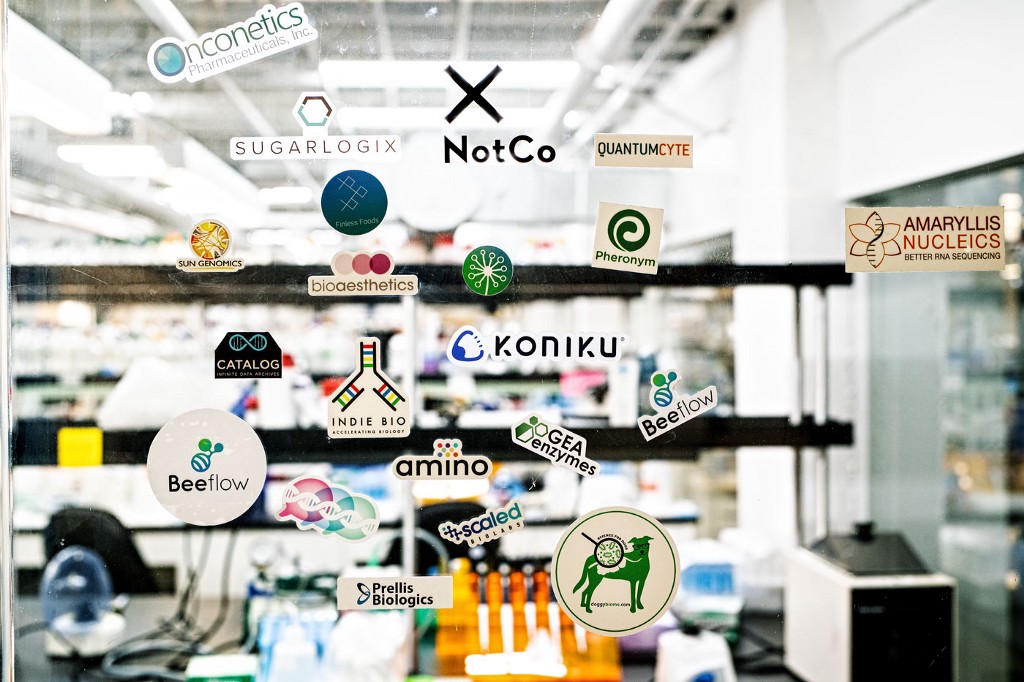
Don’t die
The 13 startups in Indie Bio’s seventh class, just two weeks old when I meet them, face long odds in the years ahead. But for a moment, let’s pretend they all succeed. The world would be different in all manner of ways. A billion tons of CO₂ would be converted to animal feed instead of going into the atmosphere. Children on track to develop autism would start to receive treatment for their brain differences two trimesters before they are born. Common blood tests would take minutes, not days. Your white blood cells would eat cancer. Some cancer tumors would be starved into not growing at all. Almost nobody would get cavities. Hemophilia would be cured. Colon cancer would always be detected early. In medical emergencies, trained personnel would find you in minutes, wherever you are. Bioreactors would be as common as desktop computers. Late in life, as our brain cells go on the fritz, we would just add new ones.
“Will they work?” Gupta asks, rhetorically. “We’re here to find out.”
The prior six classes were equally high-reaching. Some people would laugh at the startups’ sheer audacity; on a bad day, even the founders can feel like Sisyphus. On an emotional level, IndieBio exists to make those founders feel normal and not undermined by doubt. Almost all them use their four months at IndieBio to take advantage of a lab stuffed with bioreactors, fluorescence microscopes, and liquid chromatography equipment that purifies proteins. This is how startups make the jump from academia, without having to raise the funds for their own equipment.
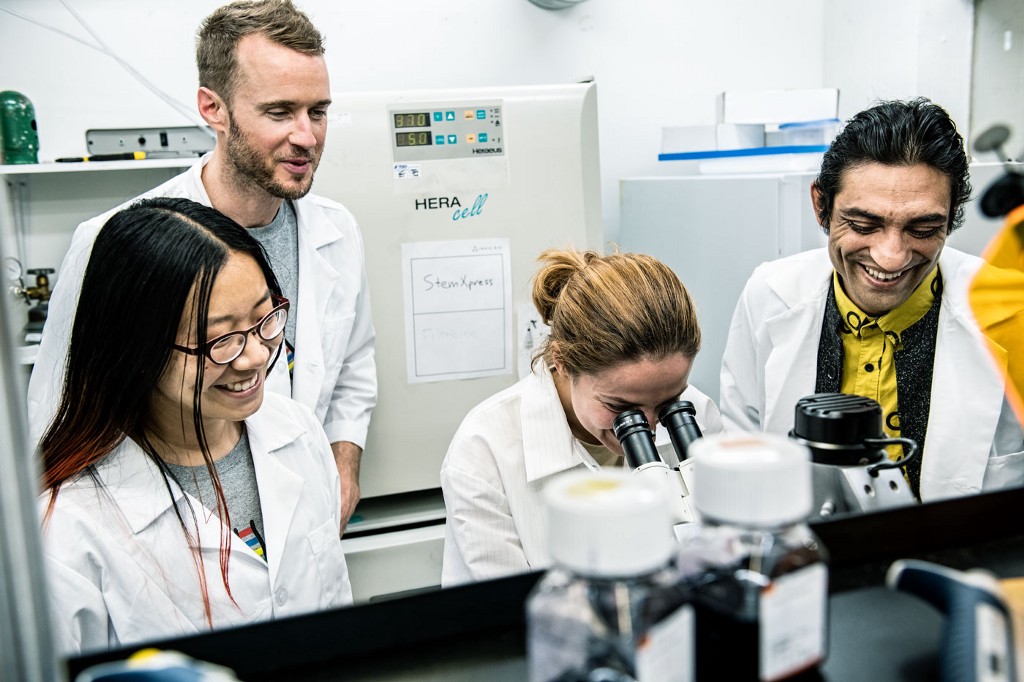
The week I spend at IndieBio is packed with seminars, panels, deep dives, and a constant trickle of visitors. On Monday, Gupta teaches a class in structuring a venture deal. One of his insights: startups should already be bringing in loans known as bridge notes from VCs even if they’re months from ready for equity deals. “Rule One: Don’t die,” he declares. “Rule Two: Get the terms you want. But if that doesn’t work, refer to Rule One.” Every day, Gupta drags a startup upstairs for a deep dive into its science, or for a session to build a “Reverse Income Statement” — a P&L imagining they’ve hit $100 million in revenue, breaking out all likely costs, to calculate future margins. Four venture capitalists stop by, as do three IndieBio graduates willing to consult with a startup in their market.
Fridays are tonally bipolar, by design. The morning begins with Gupta leading “Killer of the Week,” where a small trophy is passed to the startup that has made the most progress in the past seven days. Then the day finishes with “Journey Talks,” where three founders must stand before their peers and tell their personal story, complete with photos of their childhoods. This baring of their soul creates bonding among the class, forcing the founders to be in touch with their emotional core.
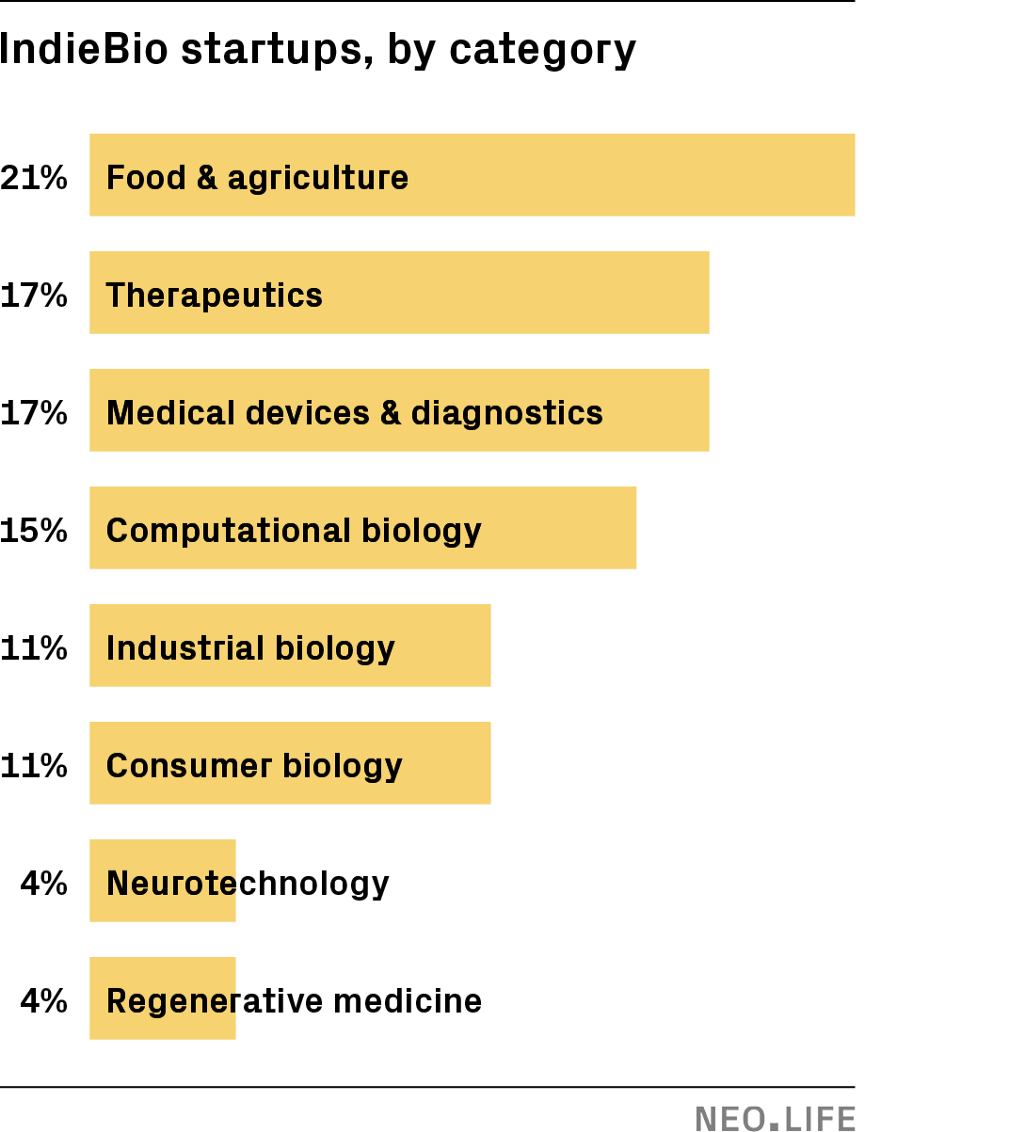
Gupta oversees it all, both as grandmaster and continuous participant. What becomes immediately clear is that, even though he didn’t spend a decade in venture capital or a decade as a bench scientist, he has learned the equivalent in three years on this job, by shepherding 81 startups through this process. As we tour the lab, he teaches me the thermal cycling process in a polymerase chain reaction machine used in gene manipulation. In a deep-dive hour with a gene-therapy startup, Serenity Bioworks, he brings to bear his past experience with another startup, Prellis, which uses little sacs called liposomes to deliver drugs in the body. Making the most of the hour, Gupta helps Serenity’s founders frame their story to investors, recommends a business model, and pushes them to tweak one of their experiments, which they will do the next day.
Gupta doesn’t have to play catch-up. In fact it’s more like everyone has to catch up to him. His counsel is constant and he asks the startups strategic questions so fast they barely have time to answer him. Having had a dozen cellular agriculture companies come through IndieBio, Gupta draws on their experience to advise companies in this class that are working on bioengineered pork sausage and fish feed. In the same way, Gupta and the team at IndieBio have gained wide experience across gene delivery, stem cells, the microbiome, disease prediction, medical devices, brain-machine tech, and age-reversing mechanisms.
Startups have constant access to a staff with as much variety as the gang in Ocean’s Eleven. Taylor Sittler is a physician and co-founder of Color Genomics. Jun Axup is a biochemist from Scripps; she went through IndieBio in its second class with the startup MYi Diagnostics. Alex Kopelyan has a PharmD degree and is an expert on business models. Parikshit Sharma is the quant, an analyst and data scientist. Maya Lockwood programs the leadership track with Kopelyan; she’s trusted to make sure the entrepreneurs don’t lose touch with their soul in the process.
Young computer engineers are expected to stay up all night and have the code by morning. They’re well-prepared for the high-speed, build-and-test cycles of startups. That’s less true for molecular biologists, MDs, and lab scientists, who have learned the slow and careful method of academia, where, you might have a great idea what to do next, but first you must write a grant application. A year later, you receive the grant — and then you have to do exactly what you wrote in the grant. If you had a better idea in the meantime, you might be able to jam it in. Writing papers for publication is critical to the process, but time consuming, and often feels like giving away the discovery, both to nobody and to everybody.
“I really care that what we do here, in these 16 weeks, adds real value to the companies,” Gupta says. “It’s possible what we do doesn’t matter — that we’re just really good at selecting the best applicants, with the best science and the best co-founders. And they would do just as well without our program.” To me, this is a sort of straw man self-interrogation. It’s plainly obvious the startup founders need the scaffolding, and that if the accelerator program didn’t exist, few would have left academia, where life was slow, but safe. It simply would have been too risky, the chasm too far.
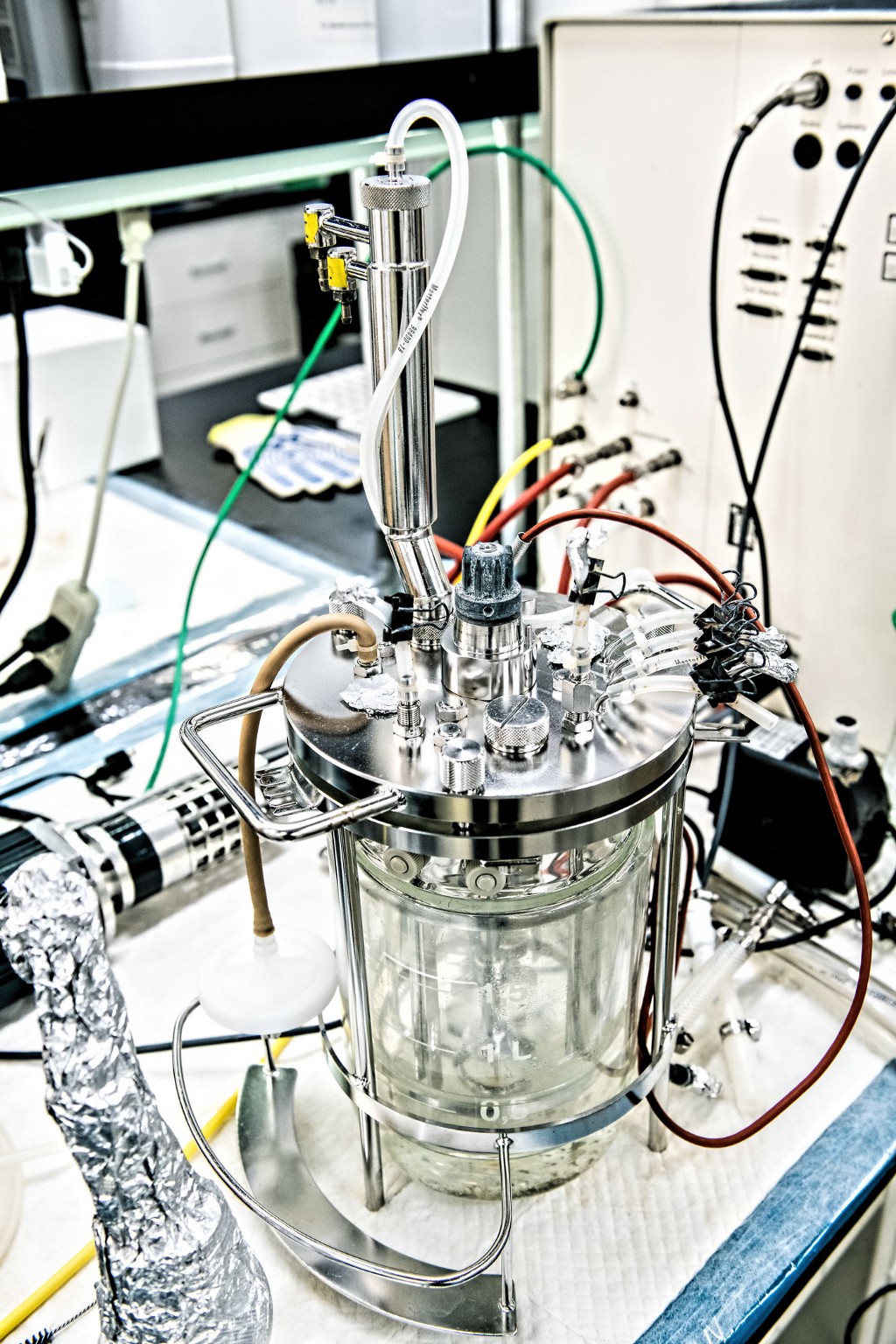
More than that, it’s likely no investor would gamble on them, either. Until IndieBio and its kin emerged, biotech innovation was only getting more expensive. A typical Series A biotech investment to do preclinical discovery might be $20 million, in milestone payments, with $5 million up front. VCs need to feel fairly confident to bite, which filters out thousands of scientific possibilities that don’t meet their standard. IndieBio, meanwhile, can take on science that is a little more risky, while spending only $250,000 and four months. IndieBio can fund 20 companies for every one that Sand Hill Road funds. This widens the funnel and provides career paths for postdoctoral scientists that didn’t exist before.
Another way to think about this is from a chronological perspective. IndieBio is able to test the commercial potential of certain threads of scientific inquiry roughly three or four years before they would be ready for traditional biotech investment. “A year ago, at Stanford, when we discovered our method was working across a variety of cancers … we were so excited that I didn’t even want to publish a paper, I wanted to file a patent,” says Xiyan Li, cofounder of Filtricine, which intends to treat cancer with dialysis. “But we drafted a protocol to continue our research. There were all kinds of regulations and funding issues. It was moving too slow. Even if we had waited for the grant, it would have been at least a couple years to test it in mouse models.” Frustrated, he and his team applied to IndieBio. Already, just three weeks into the program, they are performing those very tests on mice.
Subhadeep Das, co-founder of the startup Convalesce, which transplants stem cells into the brain, tells a similar story. He finished his Ph.D. in Mumbai just a year ago, and his co-founder, Amrutraj Zade, is a year from finishing his. “Even though we have a patent, if we stayed in academia, the science alone would take three years before we could think of approaching biotech,” he estimates. He had one meeting with a pharmaceutical CEO last spring. “He said, ‘Whoa, you’re starting with the brain?’ He wanted us to start with something smaller, below the neck. They wanted us to go slower, not faster.”
Gupta is careful to clarify that IndieBio’s sprints are only for the early phases of biotech innovation. When it comes to FDA approval of safety and efficacy, those phases will go at normal speed. “I will run towards regulation rather than away from it,” he says.
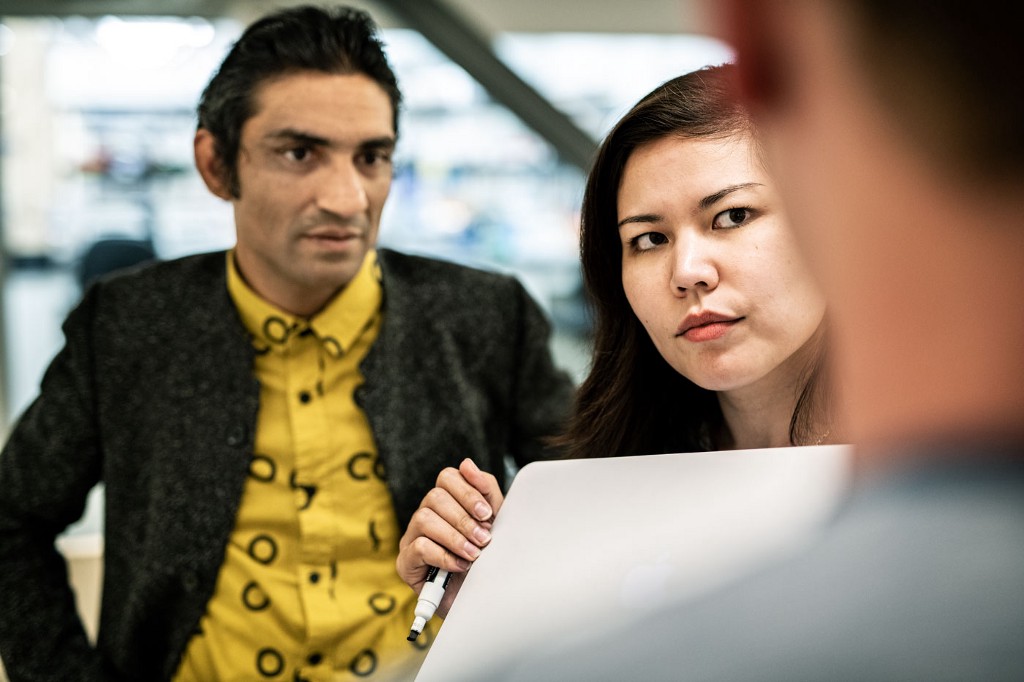
The utter emptiness of cash
Gupta grew up in what he calls “a house of knowledge.” His father, Rishab Gupta, was from a town outside New Delhi, born to a family of wealthy businesspeople who made sugarcane machinery. Unlike his brothers, Rishab was fascinated by the biology of sugar plants, and went on to get his Ph.D. at Rutgers in microbiology, then settled in Los Angeles as a professor of surgical oncology at UCLA. As a kid in Van Nuys, Arvind Gupta was athletic, playing quarterback for his high school football team and pole vaulting for the track team. “He was not the top athlete, but he was always the team leader,” says his younger sister, Anita, now an ophthalmologist in New York. “He always got everybody together. In the Boy Scouts, when he received his Eagle Scout award, there was a challenge involving getting a pile of rocks up to the top of a mountain. I remember his rallying everyone to get those rocks there.”
She vividly recalls when their father had a heart attack and needed angioplasty: “That procedure was a huge deal back then. Not like now. Mom was terrified.” Her brother took her to the biomedical library at UCLA, and they read articles on angioplasty. “He wanted us to be less worried, and more understanding of what would happen to dad. That was always Arvind’s way, to not rely on others and find answers yourself.”
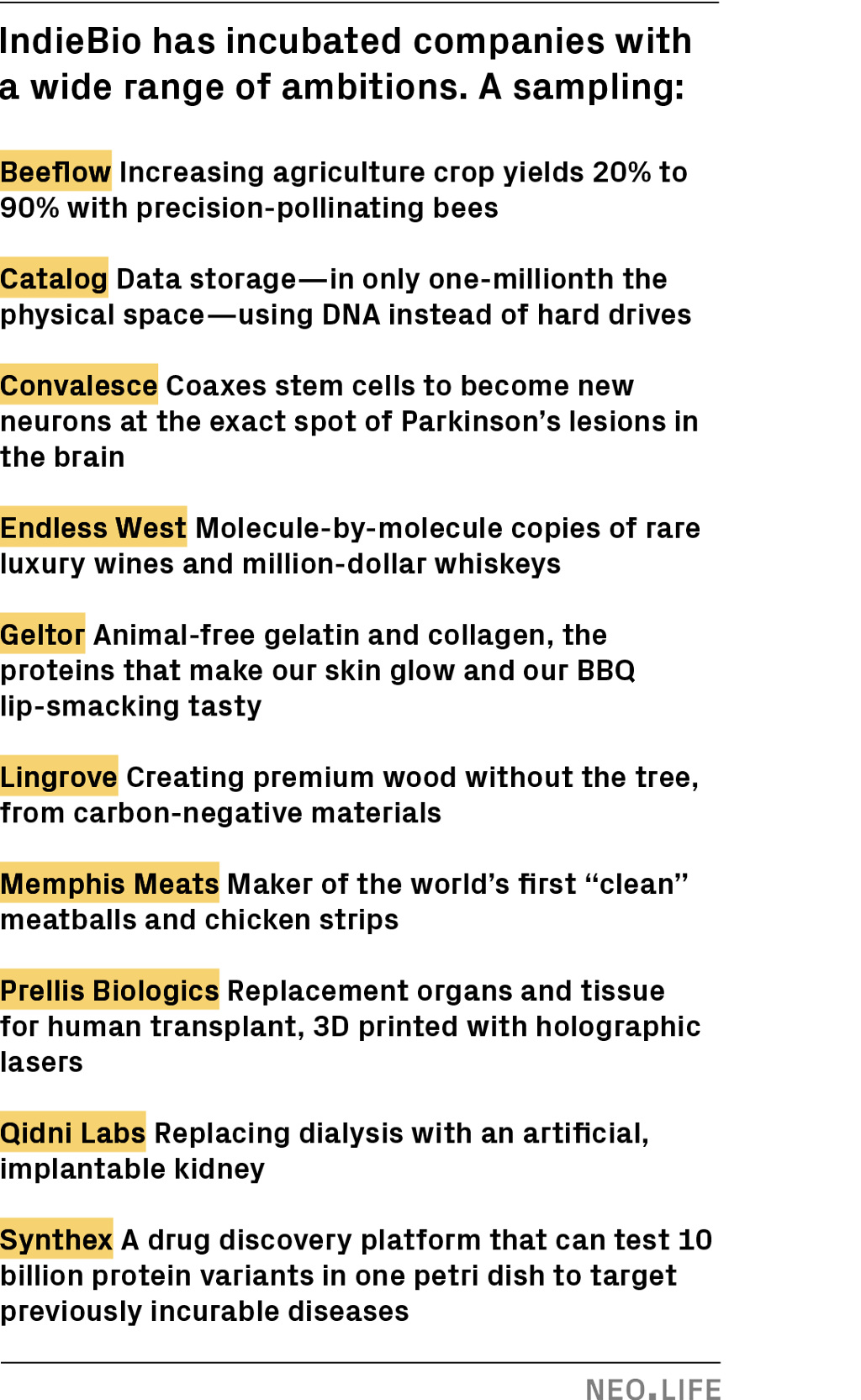
Gupta attended UC Santa Barbara, where he did bench science in the lab of biology professor Eduardo Orias. “Even then, I was frustrated at the disparity between the speed of thought and the speed of a shaker flask,” he recalls. Gupta had a grand idea to modify the genome of E. coli to contain the enzyme cellulase, and then secrete it into the human intestine. Cellulase would allow humans to digest wood, much like termites, and that would solve world hunger. “Even then, I was oriented around human value,” he says. “I didn’t want a prize for discerning the structure of cellulase.” Majoring in genetics was a means to an end. Orias’s lab studied the freshwater protozoa tetrahymena thermophila, abundant in lakes and ponds across many climates. It’s perhaps one of the most complex single-cell eukaryotes in nature. It has seven sexes; its cells have two nuclei and 275 chromosomes; and it can survive both symbiotically and as a pathogen. Work on tetrahymena has led to two Nobel Prizes, for the discovery of catalytic RNA and telomeres. “But my work was slow, from just a mechanical standpoint,” recalls Gupta. “It would take three months to prep the DNA.”
Hungry for life at the speed of thought, Gupta had a second major, in economics, and took that path after college, defying the expectations of his family. He landed at the Pacific Exchange in San Francisco as a market maker in Microsoft options, back in the days of open-outcry transactions. “The exchange was adrenaline charged, you had to fight to get noticed to get the order. Arvind had an edge to him, and he really stood out,” remembers a friend, Peter Kim, who was one of Gupta’s co-workers. One night after leaving a restaurant, as they stood on the street corner, Gupta looked up at the brick building. The next moment, Gupta was climbing the bricks two stories above the street, “with just his hands, like a Spider-Man character.”
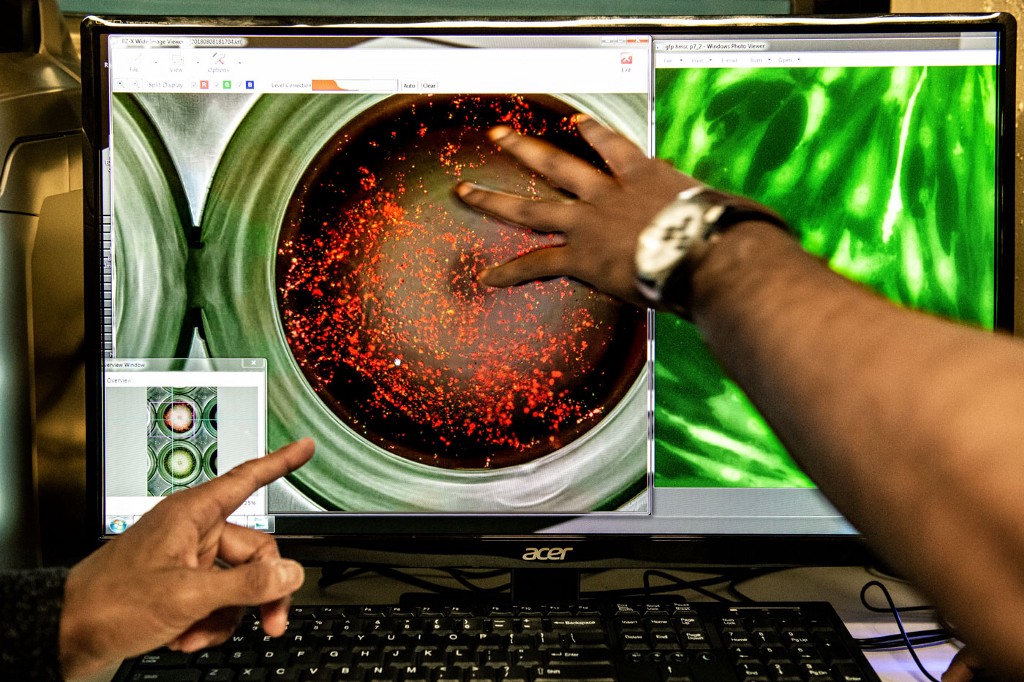
Kim says Gupta was “going through an internal struggle at that time. Outside of work, he lived a nomadic lifestyle.” As Gupta remembers that period: “I watched other guys buy things with their money that they didn’t need. I recognized the utter emptiness of cash, the vast soullessness of trading your life for money.” When the Pacific Exchange adopted electronic trading and moved to Chicago, Gupta and Kim stayed behind. Gupta didn’t work for the next two years. Almost as an antidote to the culture of his former job, “I was interested in living without any care for money,” he says. “To see where that took me.”
He lived in Berkeley near campus with his sister’s boyfriend, in a one-bedroom apartment. By day he hung out at Caffe Med, the former meeting place of the Beats and sixties activists, reading Herman Hesse and Flaubert, then going over to Moe’s Bookstore to read physics. He wrote poetry and painted. “We called that ‘his Blue Period,’” says his sister, referencing three struggling years of Picasso’s early life. “He was trying to figure out who he really was.” Gupta would meet people at the cafe and invite them to come live with them. The one-room apartment became a home for six.
Rock climbing led to skydiving, and skydiving to BASE jumping. He did hundreds of jumps. “I would die every time he went,” says his sister, who by then had moved in with her boyfriend and her brother. “It’s a selfish sport, but something maybe he needed.”
Nothing is normal in the new biotech; it’s inherently cross-disciplinary and purposefully attacks preconceptions of what can’t be done.
The person who steered Gupta to design was a fellow jumper named Stefano Moris. “I met Arvind one night at a drop zone in Lodi, California,” Moris says. “There was too much wind, and we ended up getting drunk on a plastic bottle of wine. Many a night we drove across California to jump sites, having long discussions about the meaning of life. It was kind of a shared adolescence.” Moris was a graphic designer and filmmaker. “I impressed on him that design is not drawing. It’s just solving problems.”
That stuck with Gupta. “I stopped base jumping because I found purpose in life through design, and my life was no longer expendable,” he says. He applied to the School of Design at San Francisco State. Classes for the semester had already started, but Gupta convinced a professor of his passion. And then before he even graduated, he was hired at IDEO.
Dave Blakely, who ran IDEO’s smart products business group, still remembers how Gupta arrived on the scene. “IDEO had this design director, the late Paul Bradley, who was a real cynic and very hard to impress. He rarely had a good thing to say about anybody. But one day he said to the group: ‘I just met this guy. He may be the best intern candidate I’ve ever met in my life,’” Blakely says. For his IDEO job interview, Gupta brought some mechanical toys he had designed and two cuts from films he had made — one of BASE jumping in New York City, the other of a city as living organism. “Arvind showed up with tremendous talent and native intelligence, but more importantly, he was committed to having a point of view,” Blakely says. “Design at its worst is flaccid. You show the client options without your own opinion. That wasn’t Arvind.”
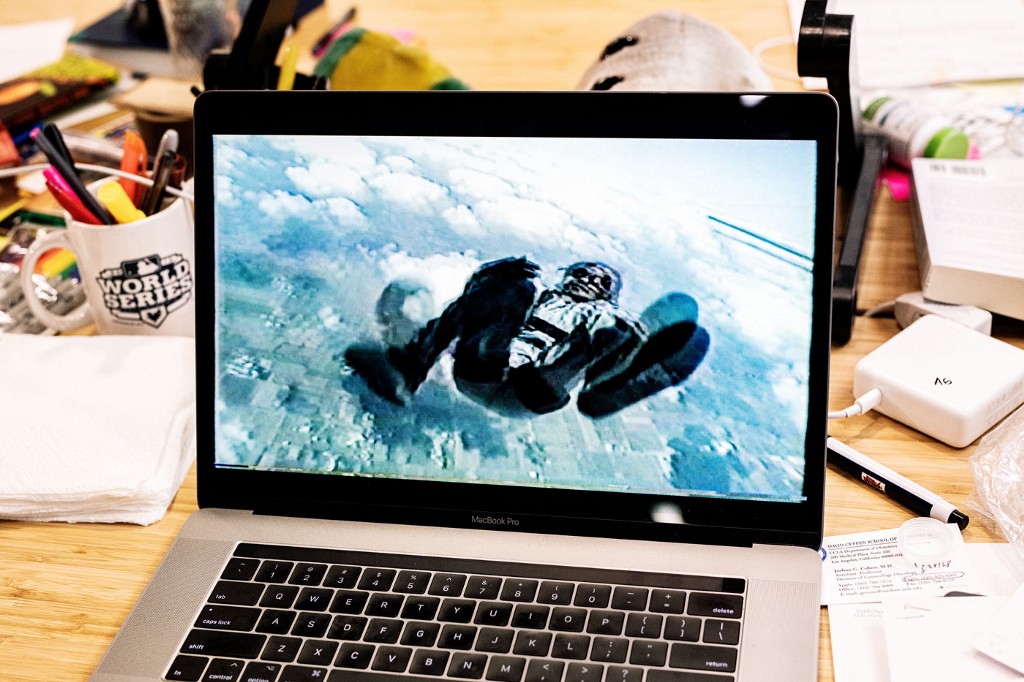
Gupta was renowned at IDEO for mastering software rendering packages in one night, “by thinking the way the software thinks.” Blakely says Gupta would go unconventionally deep into a client’s technology, both to understand it and work with engineers on their level. “But what really impressed us all was when he went to Shanghai to take over the China office.”
The way Blakely tells it, IDEO at the time applied its design thinking methodologies to Chinese corporations, a “let us teach you how we do it in Silicon Valley” approach. Gupta sensed that for IDEO to succeed in Shanghai, it needed a cultural basis to its method. He considered the way Chinese firms were known mostly for imitating Western products and websites, a process known as “Shanzhai.” Gupta saw that as similar to the way fine artists during the Renaissance trained by making exact copies of the works of masters. Shanzhai, he preached, was just an entry point to creativity. The first thing you do is duplicate, then you move laterally. “He embraced Chinese culture,” Blakely says. “His thinking was so original.”
In 2011, Gupta co-authored a paper in the Journal of Commercial Biotechnology on the possibility of applying design thinking methodology to scientific research and development, “to increase the speed, inventiveness, and vitality of their output.” “I started thinking about applying what I’d learned to my first love, biology,” Gupta recalls. He was aware that so many of the procedures that slowed microbiology research down when he was at UCSB were now automated, fast, and inexpensive. “It was getting cheap enough to run like an IT company,” he says. “I wondered if soon, you could run a biotech company like an IT startup.”
I lost 10 pounds during IndieBio.
Chaeyoung Shin CEO of Sugarlogix
Soon after, Gupta met Sean O’Sullivan, founder of SOSV, the venture firm that eventually would become the parent company of IndieBio. It now operates six accelerators around the world, across hardware, mobile technology, food, and life sciences. Gupta was mentoring at Hax, the hardware accelerator. “It was obvious from the first days that Arvind was of great help to the startups,” O’Sullivan says. “His emphasis on human-centered design, and his focus on service in support of others, was at the core of what SOSV was also about.” As O’Sullivan talked to Gupta about joining SOSV, Gupta argued for “doing what had been done in software for life sciences.”
When they built the IndieBio website and activated the application form, Gupta had no idea if scientists around the world would find them and apply. Eighty did, and from those, the first class was born.
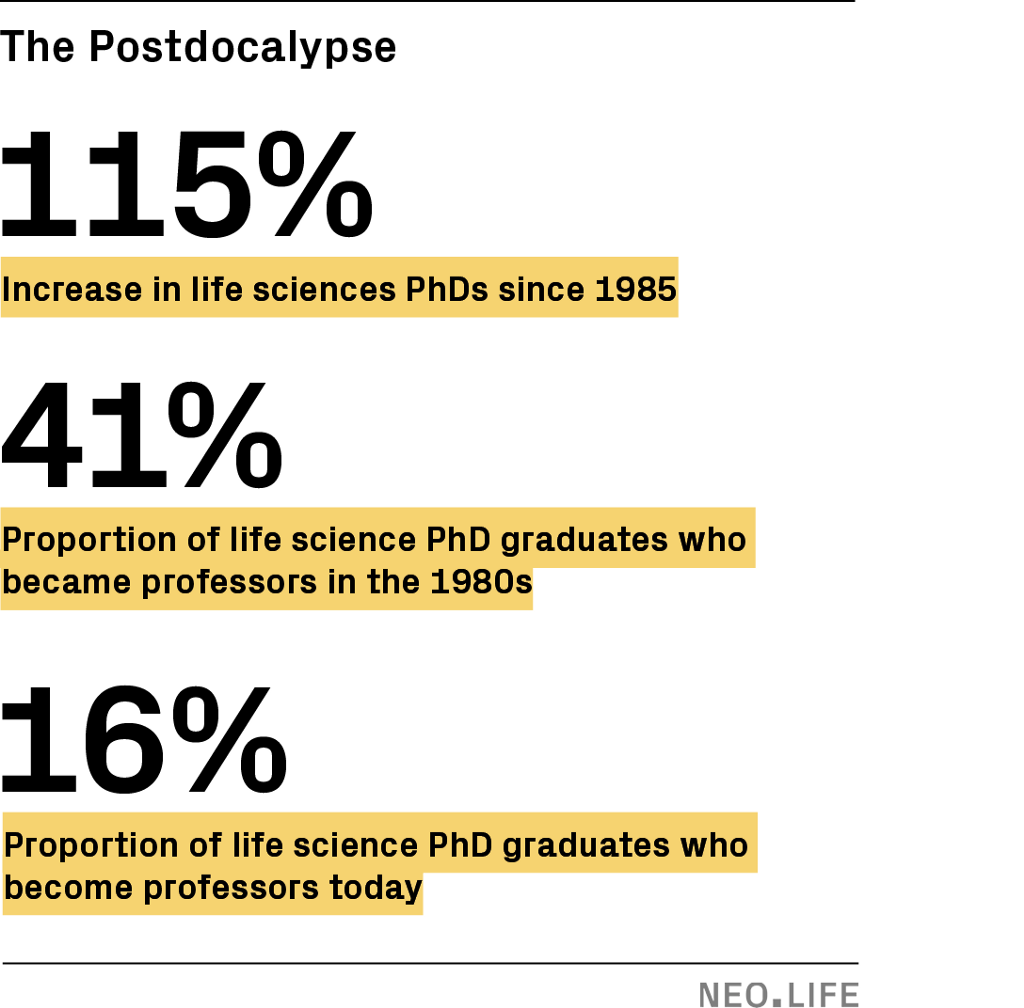
Gupta may have an unusual background, but it’s clear that from all of his experiences, he extracted some valuable DNA, and now, like an enzyme, he passes those snippets into the startups he cultivates. Even though he rejected high finance, he honed a nimbleness with time-vs-money equations that he applies to venture capital. While BASE jumping, he learned to bring control to something widely perceived as uncontrollable by being obsessive about eliminating risk. From his “Blue Period” in Berkeley’s cafes, he developed a devotion to having a higher purpose, orienting his life to making our world better.
“We are responsible for the future of our own species,” he says. “At this point, it’s not happening to us; our future is defined by our own actions.” Wryly, he adds, “Everyone talks about going to Mars. Sure, but, let’s take care of the planet we have.”
IndieBio even takes something from jiu jitsu, Gupta’s sport of choice today. “Startups win against huge corporations the same way a lightweight martial artist, like me, goes into the ring against a much bigger combatant. I leverage my entire body weight against one joint, one tendon. If a startup can apply 100 percent of its energy to one problem, and nail that problem, you can disrupt an entire industry.”
When it’s time to worry
There is one more interesting trend that’s been driving the growth of life sciences accelerators. Academic scientists have nicknamed it “The Postdocalypse.” From 1998 to 2003, the National Institutes of Health budget doubled, from $13 billion to $26 billion, fueling a rapid expansion of bioscience research and a corresponding increase in the number of graduate students in labs doing that research. Since then, NIH budget growth has been slow — it’s now at $37 billion — which has provided fewer opportunities for scientists. “Only 1 in 5 postdocs get highly coveted jobs in academia,” according to a National Academy of Sciences committee. The others end up in industry, doubling their salary, but that route often involves a step back from the cutting edge. Life science accelerators — and the companies they create — have expanded the career paths in science. “But this is harder than any other options you have on the table,” cautions Ursheet Parikh of Mayfield Fund.
How much harder? “I lost 10 pounds during IndieBio,” laughs Chaeyoung Shin, CEO of Sugarlogix, a graduate of the fifth class. “Making cold calls on customers was one of the hardest things for me as a scientist,” said Carlos Araya, CEO of Jungla. “I thought I could easily learn the business side, that it wasn’t a big deal. It is a big deal.” Todd Huffman, CEO of 3scan, started his company before IndieBio existed, but has undergone a similar journey. “I thought business and marketing people were slackers who didn’t work very hard. I didn’t value the work that was done. 3scan is my third company, and my first one imploded because of my lack of understanding of those skills.”
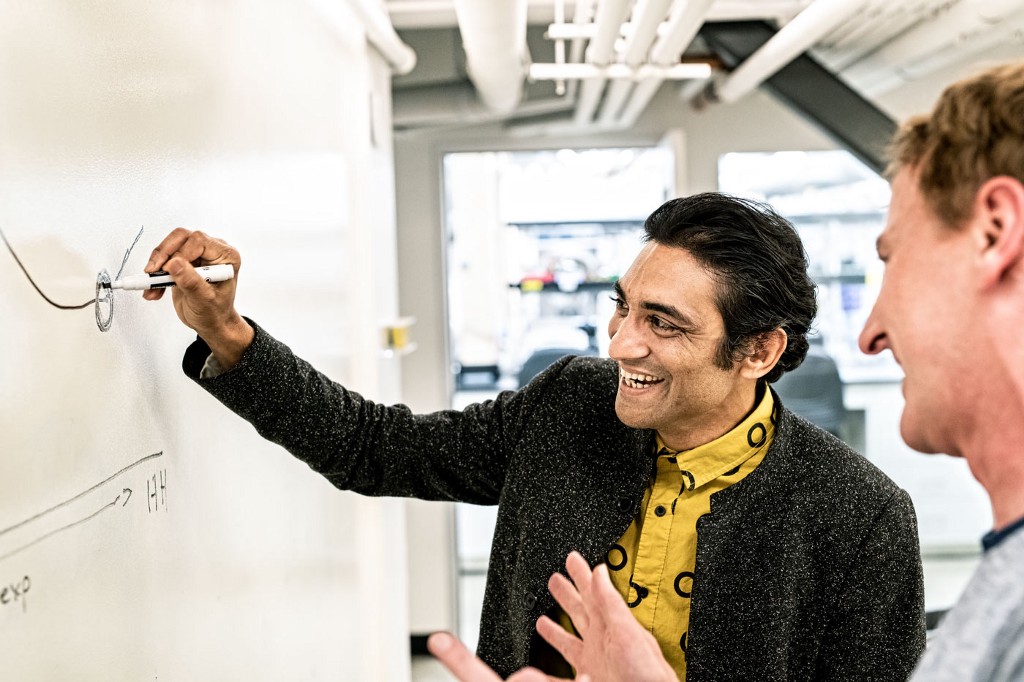
Being forced to sit elbow-to-elbow, sharing desks in a way that’s reminiscent of an Army boot-camp bunkhouse, generates peer effects. The startups overhear bits of each other’s phone calls and conversations. When one receives a term sheet from a VC, the others all know about it, and that incites them to set up more meetings. They try their pitches on each other. One startup was having trouble getting stem cells fast enough from a commercial vendor; another startup came to the rescue.
Gupta and his team repeatedly emphasize results. One of the reasons startups fail is they celebrate hopeful situations; their bar is set too low. “Having a few meetings is not progress,” he says. “Emailing people is not progress. You should be worried if you didn’t make a major decision this week.” Making decisions brings the company into focus, and focusing energy is the most important lesson he hammers home. One of Gupta’s favorite aphorisms is, “If you have a problem, you have a company. If you have two problems, you’re dead.” By this he means a startup that is trying to solve two problems at once won’t have enough focus to succeed on either. Set your next milestone — make sure it’s a milestone that will bring in more funding — and execute. Alex Lorestani, the CEO of Geltor, from IndieBio’s second class, says: “Arvind was better than anyone at collapsing down all that shit into a simple statement: what do we need to do to get to the next round. The word ‘milestone’ almost cheapens it. Arvind made sure we understood this was survival for us.”
I could see that pressure during the third week of the class. There was so much for these startups to do that it was hard to know what to do at any given moment. But results were achieved almost every day. Two startups received term sheets from VCs; two others were selected as finalists for a year-long mentorship by Andreessen Horowitz; another secured licensing from their former university; data from trials came in; decisions were made about which product line to focus on first; 3D printers cranked out the first components for assembly.
If you have a problem, you have a company. If you have two problems, you’re dead.
Arvind Gupta IndieBio Founder
The implicit question that hung over the week was how IndieBio will do without Gupta as a constant presence. He still will be running both the New York and San Francisco programs, and he will visit — but he won’t be there every morning giving hugs and fist bumps, delivering blender pulses of cheerleading affirmation and incisive criticism, reminding everyone that “technology is not a product.”
O’Sullivan of SOSV is sure the rest of the team will fill that role because the surgeon’s “SODOTO” mindset — see one, do one, teach one — is embedded in the organization. “That’s how Arvind learned, and that’s how those who follow will learn.” On the job. Doing it. Not studying it.
I have the sense that, officially, Gupta would agree with this, but it would also rankle him, because he’s put his heart into these startups. And yet that’s the job as he designed it — to pass the DNA along, and trust the code will not drift.












